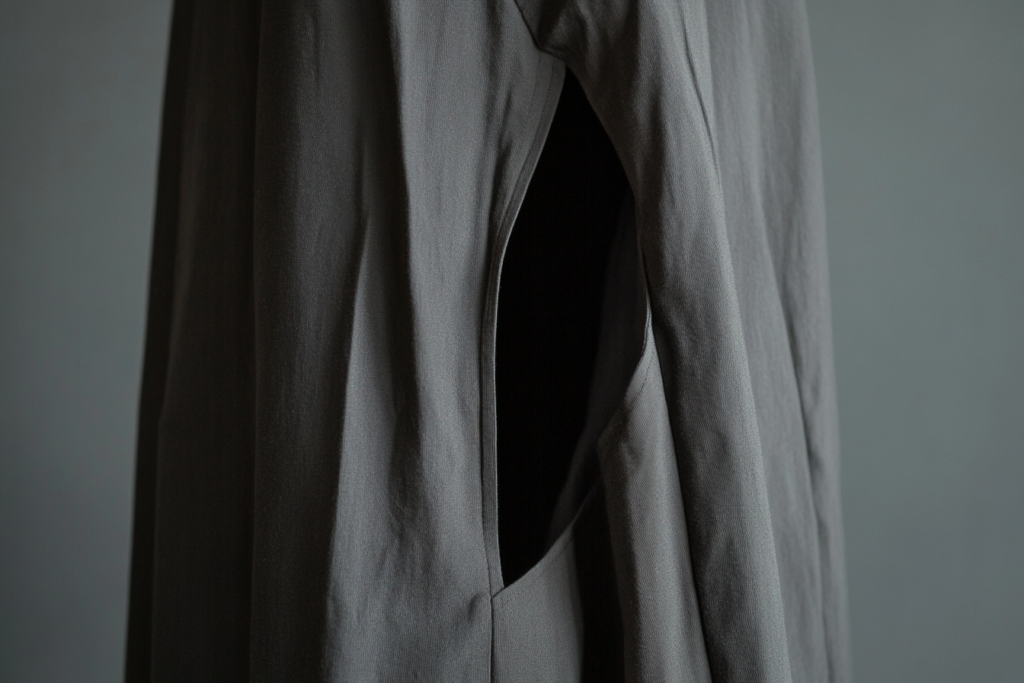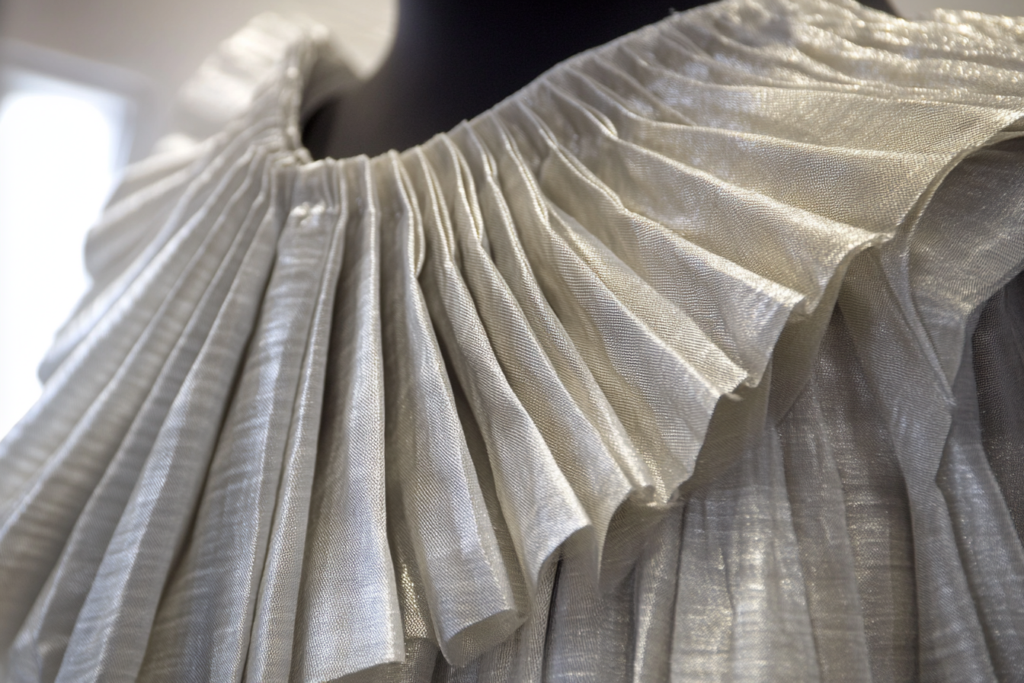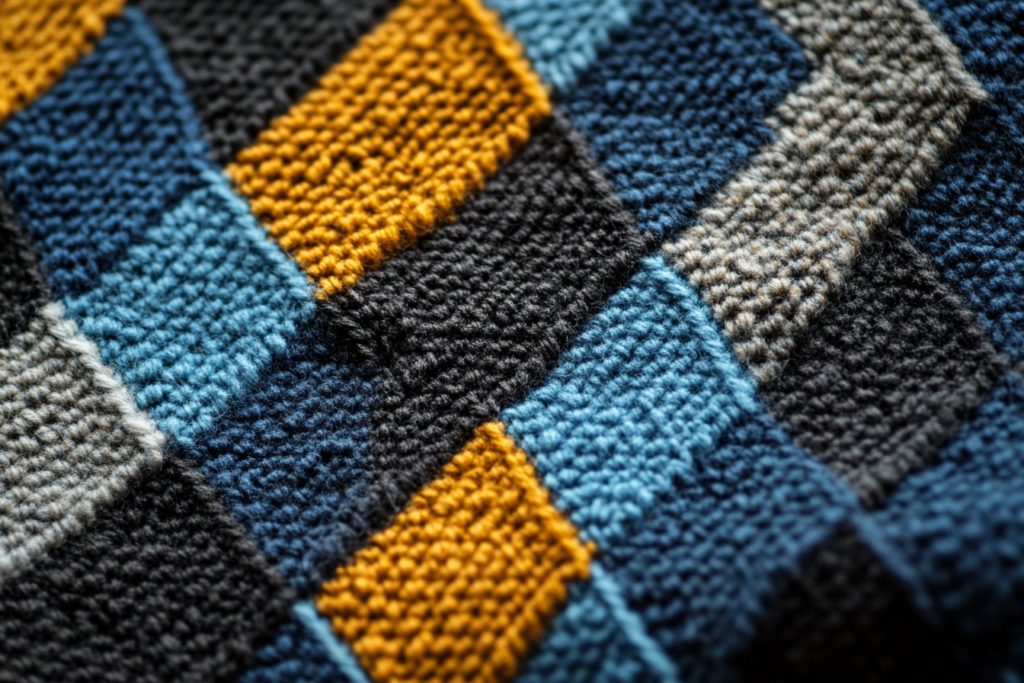Slit: The Functional and Stylish Opening in Garments
Meta Description: A slit is a long, straight opening in a garment that allows ease of movement and enhances style. Learn about different types of slits, their uses, and how they are constructed in fashion design.
What is a Slit in Fashion?
A slit is a straight, long opening in a garment, typically positioned vertically and perpendicular to the waistline or hem. It serves both functional and decorative purposes, providing ease of movement, enhancing the silhouette, and adding design interest.
Slits are commonly found in skirts, dresses, coats, sleeves, and trousers, offering comfort, style, and elegance. The edges of a slit are clean-finished, ensuring durability and a polished look.


Key Features of a Slit
✔ Straight, Vertical Opening: Typically runs up from the hemline or seam.
✔ Enhances Mobility: Allows for greater leg movement in fitted garments.
✔ Adds Style & Elegance: Creates a dramatic effect in skirts, dresses, and gowns.
✔ Clean-Finished Edges: Hemmed, reinforced, or padded for durability.
✔ Can Be Functional or Decorative: Designed for comfort or as a fashion statement.
Types of Slits in Garments
| Type of Slit | Description | Common Uses |
|---|---|---|
| Side Slit | Slit placed on the side seam of a garment | Skirts, tunics, maxi dresses |
| Back Slit | A single vertical opening at the back | Pencil skirts, coats, sheath dresses |
| Front Slit | Runs vertically at the center front | High-fashion gowns, evening dresses |
| Sleeve Slit | A small opening at the cuff or upper sleeve | Blazers, dress shirts, formalwear |
| High Slit | Extends significantly up the leg | Evening gowns, red-carpet dresses |
| Invisible Slit | Designed with concealed or overlapping fabric | Modern tailored skirts, trousers |
Each type of slit serves different purposes, from enhancing mobility to creating visual appeal.
Why Are Slits Used in Fashion?
1. Improves Comfort & Mobility
- Slits in skirts, dresses, and pants allow for easier movement, especially in form-fitting garments.
2. Adds an Elegant Touch
- High slits in gowns and skirts create a graceful, sophisticated look.
3. Enhances Garment Design
- Slits add visual interest to an outfit, creating layered effects and flowing movement.
4. Ventilation & Practicality
- Slits in summer dresses, tunics, and outerwear provide better airflow and flexibility.
How Are Slits Constructed?
A slit must be properly finished to prevent fraying and fabric distortion. The construction method depends on the fabric type and garment design.
📌 Basic Slit Construction Steps
1️⃣ Mark the Slit Placement – Determine the length and position of the slit.
2️⃣ Reinforce the Opening – Add interfacing or reinforcement stitching to prevent tearing.
3️⃣ Cut the Slit – Carefully cut along the marked line.
4️⃣ Finish the Edges – Use methods like narrow hems, bias binding, or overlocking for clean edges.
5️⃣ Press for a Polished Look – Ensure the slit lays flat for a professional finish.
Tip: A padded slit has a reinforced edge, ensuring extra durability and structure in high-end garments.
Slit Placement in Garments
📍 Skirts & Dresses: Found at the side, front, or back hem to increase legroom.
📍 Jackets & Coats: Featured on back vents to improve fit and movement.
📍 Pants & Trousers: Small ankle slits add flexibility and a sleek detail.
📍 Sleeves & Cuffs: Used in formal shirts and blazers for a tailored effect.
Slit vs. Vent: What’s the Difference?
| Feature | Slit | Vent |
|---|---|---|
| Purpose | Functional or decorative | Primarily functional |
| Common Placement | Skirts, dresses, sleeves | Jackets, coats, blazers |
| Design | Often unlined, standalone opening | Can be lined, pleated, or overlapped |
| Flexibility | Enhances movement & style | Prevents fabric bunching & adds structure |
While a slit is typically an open cut, a vent is more structured and common in outerwear and tailored garments.
Popular Fashion Trends Featuring Slits
🔥 High-Slit Gowns: Seen in red carpet looks and formal evening wear.
🔥 Asymmetrical Slits: Used in modern skirts and dresses for a stylish edge.
🔥 Side-Slit Pants: Trending in streetwear and casual fashion.
🔥 Draped Slits in Couture: Creates flowing movement in high-fashion collections.
Caring for Garments with Slits
✔ Reinforce Seams – Strengthens high-stress areas to prevent tearing.
✔ Avoid Pulling on the Fabric – Prevents stretching or distortion.
✔ Steam or Press Regularly – Keeps slits crisp and well-defined.
✔ Use Proper Hems – Ensures a clean, polished look on all slit edges.
Conclusion: The Timeless Appeal of Slits in Fashion
Slits are a versatile and stylish design element, offering practicality, elegance, and modern appeal. Whether used for movement, ventilation, or dramatic styling, slits continue to be a staple in runway fashion, casual wear, and high-end tailoring.
By understanding slit placement, construction techniques, and styling options, designers and fashion enthusiasts can create functional yet fashionable garments.



